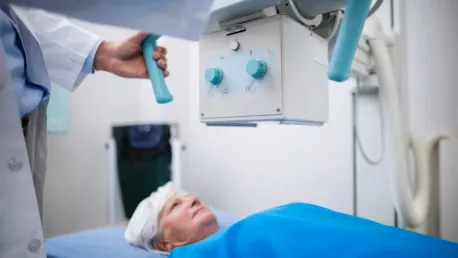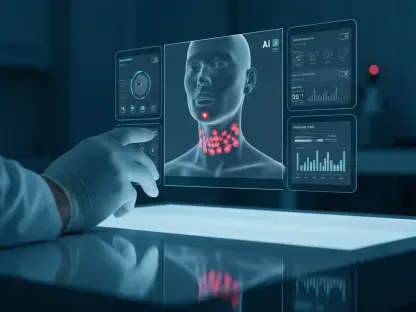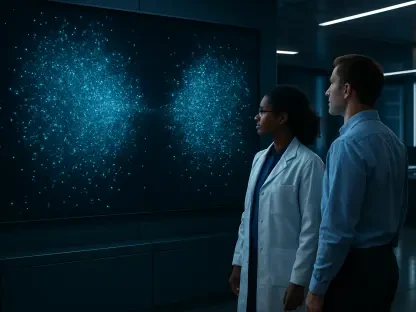The advent of MRI-guided stereotactic body radiotherapy (SBRT) represents a significant advancement in the treatment of prostate cancer, offering improved precision and reduced long-term side effects compared to conventional CT-guided approaches. This breakthrough is underscored by findings from a recent two-year follow-up study conducted by researchers at the UCLA Health Jonsson Comprehensive Cancer Center as part of the MIRAGE randomized clinical trial. Notably, this trial marks the first direct comparison between these cutting-edge radiation oncology technologies, presenting compelling evidence for the superior efficacy of MRI-guided SBRT.
Advantages of MRI-Guided SBRT in Reducing Side Effects
Urinary and Bowel Health Improvements
A key aspect of the findings from the MIRAGE trial centers on the significant reduction in urinary and bowel side effects for patients treated with MRI-guided SBRT. The study revealed that only 27% of patients who received MRI-guided SBRT experienced moderate or severe urinary issues, compared to a notably higher 51% among those treated with CT-guided SBRT. This substantial difference underscores the potential of MRI-guided therapy to enhance patients’ quality of life by minimizing urinary toxicities, which are common and distressing side effects of prostate cancer radiotherapy.
In addition to the urinary benefits, gastrointestinal toxicity was significantly lower in the MRI-guided group, with only 1.4% of patients reporting bowel issues, in stark contrast to the 9.5% incidence observed in the CT-guided group. These findings are particularly important since bowel complications can severely affect patients’ daily lives and overall well-being. The ability of MRI-guided SBRT to dramatically reduce such side effects marks a crucial advancement in the realm of radiation oncology, promising a higher standard of care for prostate cancer patients.
Enhancements in Sexual Health
Another significant area where MRI-guided SBRT shows promise is in the preservation of patients’ sexual health. Prostate cancer treatments often carry the risk of sexual dysfunction, which can be a major concern for patients and their partners. The precision afforded by MRI guidance means that surrounding healthy tissues, which are critical for sexual function, are less likely to be inadvertently compromised during treatment. Consequently, patients receiving MRI-guided SBRT showed better outcomes in maintaining their sexual health compared to those treated with CT-guided techniques, which is a crucial factor in the overall quality of life.
The reduced risk of enduring side effects, collectively addressing urinary, bowel, and sexual health, highlights MRI-guided SBRT’s holistic benefits. By ensuring that patients can continue to enjoy a better quality of life during and after treatment, MRI-guided SBRT represents a compassionate and effective advancement in prostate cancer care. The integration of advanced imaging technology into radiotherapy protocols stands to not only save lives but also preserve the quality of those lives in a meaningful way.
Precision and Targeting Advantages of MRI-Guided SBRT
Real-Time Tracking Capabilities
The precision of MRI-guided SBRT is attributable to its ability to provide real-time tracking of the prostate and surrounding tissues during treatment. This capability allows for the more accurate delivery of radiation, which is crucial for avoiding unnecessary exposure to adjacent healthy tissues. The study pointed out that MRI-guided therapy can use significantly narrower treatment margins due to the real-time visualization of the target area. As a result, the risk of collateral damage to non-cancerous tissues is minimized, which directly translates into fewer side effects for patients.
Real-time tracking enhances the precision of radiation delivery, ensuring that the maximum dose is concentrated on the cancerous cells while sparing healthy tissues. By continuously monitoring and adjusting for any movements of the prostate during therapy, MRI guidance offers a level of accuracy that was previously unattainable with CT-guided methods. This heightened precision is particularly important for patients with higher risk profiles, where the margin for error is even smaller, making MRI-guided SBRT a superior option for effective and safe treatment.
Impact on Clinical Practice
The development of MRI-guided stereotactic body radiotherapy (SBRT) signifies a major leap forward in prostate cancer treatment. This method offers enhanced precision and fewer long-term side effects compared to traditional CT-guided approaches. The significance of this advancement is highlighted in a recent two-year follow-up study by UCLA Health Jonsson Comprehensive Cancer Center researchers, conducted under the MIRAGE randomized clinical trial. This trial is particularly important as it provides the first direct comparison between these advanced radiation oncology technologies. The results present strong evidence supporting the superior effectiveness of MRI-guided SBRT over conventional methods. By offering more accurate targeting of cancerous tissues and minimizing damage to surrounding healthy tissues, MRI-guided SBRT can greatly enhance patient outcomes. Patients undergoing this therapy may experience fewer complications and a better quality of life post-treatment, marking a substantial improvement in prostate cancer radiotherapy. This groundbreaking approach has the potential to set new standards in the field of oncology.









